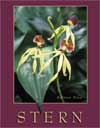1. Flowers occur in a wide variety of sizes, colors, textures, and habitats.
Annuals complete their life cycles in one growing season; biennials take two
seasons; and perennials may take several to many years to complete their cycles. 2. Dicots and monocots are distinguished from one another by the differences
in numbers of flower parts and cotyledons, venation, presence or absence of
cambia, vascular bundle arrangement, and pollen grain apertures. 3. A typical flower consists of a peduncle and a receptacle to which
are attached sepals (calyx), petals (corolla), stamens, and pistil. Flowers
may have no petals, or the petals may be fused together. Many flowers may be
in an inflorescence. 4. Stamens consist of a pollen-bearing anther and a stalk or filament. 5. A pistil consists of a stigma, style, and ovary. The ovary may be
superior or inferior and contains one or more ovules. 6. A fruit, which is unique to flowering plants, is a mature ovary.
Hormones promote the greatest fruit growth. Parthenocarpic fruits are seedless
and develop without fertilization occurring, but not all seedless fruits are
parthenocarpic. 7. A mature fruit has an outer exocarp, an inner endocarp around the
seed(s), and a mesocarp between the exocarp and endocarp; the three regions
may be fused together as a pericarp. At maturity, fruits may be fleshy or dry.
A fruit may be derived from the ovary alone or from adjacent flower parts as
well. 8. Fleshy fruits may develop from a flower with a single pistil (simple
fruit); aggregate fruits develop from a single flower with more than one pistil;
multiple fruits are derived from flowers in an inflorescence. 9. Simple fleshy fruits include drupes and berries; berries may be true
berries, pepos, or hesperidiums. Pomes have flesh derived from both the receptacle
and the ovary. 10. Accessory fruits consist of more than the ovary alone; some aggregate
fruits (e.g., strawberries) are largely composed of accessory tissue. The individual
fruitlets of a multiple fruit develop together into a single larger fruit. 11. Some dry fruits split as they mature; such fruits include follicles,
legumes, siliques or silicles, and capsules. 12. Non-splitting dry fruits include achenes, nuts, grains (caryopses),
samaras, and schizocarps. 13. Fruits and seeds may have wings, plumes, and other adaptations for
wind dispersal. Some fruits and seeds have adaptations for animal, bird, or
water dispersal. Some fruits eject seeds with force, and some have modifications
that drill seeds into the ground. 14. Humans disperse many seeds, and most countries and a few states
have strict regulations governing the importation of plant materials, primarily
to control the spread of pests and diseases. 15. A bean seed has a hilum, a micropyle, a seed coat, two cotyledons, and
an embryonic bean plant consisting of a plumule and a radicle. 16. In grains, the plumule and the radicle are protected by a coleoptile
and a coleorhiza, respectively. 17. Germination of a seed depends on the cessation of dormancy. Dormancy
may be sustained by mechanical circumstances; scarification may break dormancy
in such seeds. 18. Dormancy may also be induced by growth or germination inhibitors,
or after-ripening may need to occur. Cold temperatures may be necessary for
the germination of some seeds; stratification may break the dormancy of such
seeds. 19. A seed will not germinate unless environmental factors including
water, oxygen, light, and certain temperature ranges are favorable. 20. Seeds remain viable for a few days to more than 100 years. The viability
of most seeds is extended by storage at low temperatures under dry conditions,
but some weed seeds have their viability extended by storage under humid, cool
conditions that include little oxygen. 21. Some plants produce seeds that undergo no dormancy at all. The growth
of the embryo while the seed and fruit are still on the plant is termed vivipary. | 


 2003 McGraw-Hill Higher Education
2003 McGraw-Hill Higher Education